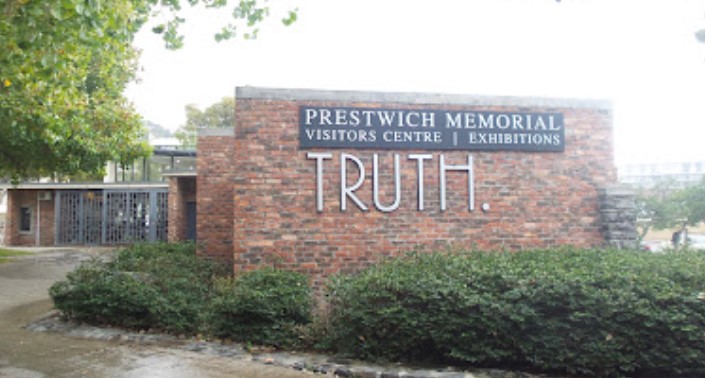Place image

During excavations for a new residential block in Cape Town in 2003, old bones were uncovered! These were decided to be unmarked graves of slaves, dating from the 17th and 18th Century. Archaeologists from the University of Cape Town were called in, as prescribed by the National Heritage Resources Act. This story ended with the opening of the Prestwich Memorial, on the corner of Buitengracht Street and Somerset Road, in 2008. The single-storey building is finished in grey Robben Island slate. The concept is one of a dignified Burial Chamber, a well-lit visitor centre, and a shaded green memorial garden. The building has been carefully positioned to protect views of St Andrew’s Church and the nearby Lutheran Church complex. The adjacent memorial garden and stone walling are placed on the alignment of the historical cemetery. The Interpretive Centre is located on an historically significant site in as much as it was formerly part of the Dutch Reformed Church cemetery - a piece of original cemetery wall stands left of the main door - and adjoins the original alignment of old Somerset Road, where the old horse-drawn trams to Sea Point once ran. It makes a striking statement, built next to the first Presbyterian Church in the country, completed in 1828. It was the first church to allow freed slaves through its doors, after slavery was abolished in 1838 in South Africa.
References
http://www.theheritageportal.co.za/article/memorial-honours-cape-slaves
https://resource.capetown.gov.za/documentcentre/Documents/Graphics%20and%20educational%20material/Heritage_The_Prestwich_Memorial_2015-12.pdf
Further Reading
https://resource.capetown.gov.za/documentcentre/Documents/Graphics%20and%20educational%20material/Heritage_The_Prestwich_Memorial_2015-12.pdf
https://mg.co.za/article/2015-12-13-forgotten-bones-haunt-cape-town/